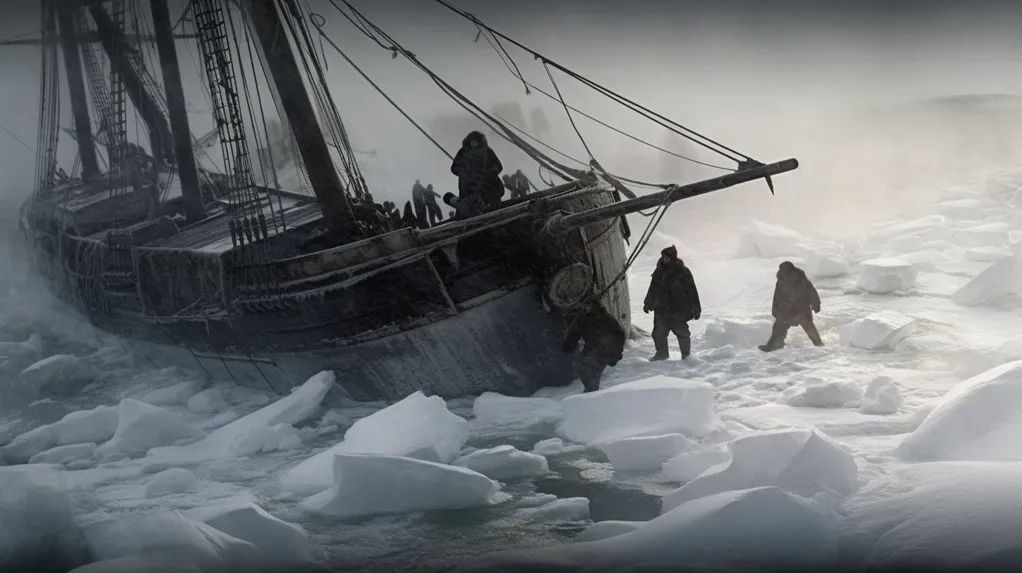Throughout history, there have been incredible tales of survival that defy all odds. From shipwrecks to battles, these stories inspire us with the resilience and tenacity of the human spirit. Join us on a journey through time as we uncover ten unbelievable survival stories from the depths of history.
The Sinking of the RMS Titanic (1912):
The RMS Titanic is one of the most iconic survival stories ever. On April 14, 1912, the “unsinkable” ship struck an iceberg and sank in the North Atlantic. Among the survivors was Millvina Dean, the youngest passenger on board. Refer to “A Night to Remember” by Walter Lord to explore this story in detail.
Shackleton’s Endurance Expedition (1914-1916):
Sir Ernest Shackleton’s ill-fated Endurance expedition to Antarctica is a testament to human endurance and leadership. When their ship became trapped in ice, the crew faced unimaginable hardships. Shackleton’s remarkable leadership ensured the survival of all crew members. To delve deeper into this extraordinary tale, readers can explore “Endurance: Shackleton’s Incredible Voyage” by Alfred Lansing.
The Holocaust Survivor: Elie Wiesel (1944-1945):
Elie Wiesel, a Romanian-born Jewish writer and Holocaust survivor, endured the horrors of Auschwitz and Buchenwald concentration camps. His memoir, “Night,” recounts his experiences and the struggle to survive during one of history’s darkest periods. Wiesel’s story serves as a reminder of the indomitable human spirit, even in the face of unimaginable atrocities.
The Battle of Stalingrad (1942-1943):
The Battle of Stalingrad during World War II witnessed one of history’s most brutal and intense fights. Amidst the chaos, Soviet sniper Vasily Zaytsev’s survival and legendary marksmanship became renowned. His story is chronicled in “Enemy at the Gates: The Battle for Stalingrad” by William Craig.
The Miraculous Survival of Aron Ralston (2003):
Aron Ralston’s extraordinary survival story unfolded in the desolate canyons of Utah, USA. Trapped by a boulder, he resorted to desperate measures to free himself, eventually amputating his arm to escape. His book, “Between a Rock and a Hard Place,” shares the details of his harrowing experience and remarkable will to survive. His story also served as inspiration for the film, “127 Hours.”
The Survival of Juliane Koepcke in the Amazon Rainforest (1971):
On December 24, 1971, a LANSA Flight 508 carrying 92 passengers crashed over the Peruvian rainforest. The sole survivor was Juliane Koepcke, a 17-year-old German student. Despite sustaining multiple injuries in the crash, she managed to survive for 11 days in the dense and treacherous Amazon jungle before being rescued. Koepcke’s gripping firsthand account of her survival can be found in her autobiography, “When I Fell from the Sky: The True Story of One Woman’s Miraculous Survival,” by Juliane Koepcke and Beate Rygiert.
The Survival of Alexander Selkirk (1704-1709):
Alexander Selkirk’s survival story inspired Daniel Defoe’s famous novel, “Robinson Crusoe.” A Scottish sailor, Selkirk, was stranded on a deserted island in the Pacific Ocean for over four years. His remarkable resilience and resourcefulness enabled him to endure the solitude and harsh conditions until his eventual rescue.
The Ordeal of Louis Zamperini (1943-1945):
Louis Zamperini, an Olympic runner, and World War II bombardier, survived a plane crash in the Pacific Ocean and spent 47 days adrift before being captured by the Japanese. His story of endurance, resilience, and forgiveness is beautifully captured in the biography “Unbroken: A World War II Story of Survival, Resilience, and Redemption” by Laura Hillenbrand. The book then inspired the 2014 film, “Unbroken.”
The Hindenburg Disaster (1937):
The Hindenburg disaster remains one of the most famous airship accidents in history. Among the survivors was Werner Franz, a cabin boy on board the ill-fated dirigible. His firsthand account can be found in “Hindenburg: An Illustrated History” by Rick Archbold and Ken Marschall.
The Siege of Leningrad (1941-1944):
During World War II, the city of Leningrad (now St. Petersburg) endured a brutal 872-day siege by German forces. Despite starvation, cold, and constant bombardment, the city’s residents displayed remarkable resilience. Readers can explore “The 900 Days: The Siege of Leningrad” by Harrison E. Salisbury to learn more about this incredible story.








